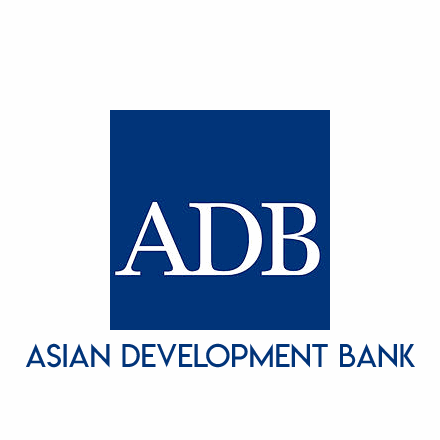Disaster risks and costs are on the rise in Asia, a region where under-insurance is still the norm and spending by government’s on contingent sources of disaster risk financing relatively scarce, leading the Asian Development Bank (ADB) to call for more to be done.
 Among the issues cited as requiring more focus, the use of insurance, reinsurance and alternative forms of risk transfer, in terms of protection directly for the people threatened by disasters as well as for governments and corporations, is seen as key to the ability of the Asia region to increase its resilience to natural catastrophes, severe weather and climate related risks.
Among the issues cited as requiring more focus, the use of insurance, reinsurance and alternative forms of risk transfer, in terms of protection directly for the people threatened by disasters as well as for governments and corporations, is seen as key to the ability of the Asia region to increase its resilience to natural catastrophes, severe weather and climate related risks.
“Four out of every five people affected by natural hazards live in Asia,” explained ADB Chief Economist Yasuyuki Sawada. “Asia has led the way on disaster risk reduction efforts in recent years, but more action is needed to tackle both vulnerability and responses at the national and the community level.”
Asia faces an environment where climate change, rapid urbanisation and rising values-at-risk are resulting in increasing exposure levels.
But despite the increasing potential financial burden that catastrophes, weather and climate will create for Asian people and government’s over the coming years, only as little as 8% of Asia’s catastrophe losses since 1980 have been covered by insurance, the ADB says.
As well as better planning, building codes, resilience measures, education and land-management, the ADB recommends improved financing measures are taken.
Governments in Asia would benefit by better planning risk transfer and insurance measures, making this a part of their ongoing budgeting. With a greater use of insurance, particularly through risk transfer products and reinsurance sector participation, enabling a broader pooling of their risks as well to ultimately make risk transfer more cost-effective.
The benefits of insurance are clear, the ADB explains, saying that, “Pooling risk to preserve human welfare, facilitating investment by containing risk, and making post-disaster support more predictable,” are all beneficial outcomes.
“While traditional indemnity insurance models are difficult to scale down to the needs of individual households in poor communities, more innovative insurance models such as index-based risk-transfer products (such as drought insurance linked to rainfall) offer potential, and government and international support for reinsurance allows broader pooling of risk,” the ADB says, highlighting the benefits of using parametric triggers within disaster risk transfer products.
For government’s it is important to remember that, “Financing response to disaster risk through insurance may be the most viable mechanism for large residual risks that cannot be reduced or managed otherwise,” the ADB says.
“Risk transfer solutions are typically more cost-efficient sources of financing for medium-range risks generating relatively large but less frequent losses. These instruments include insurance and insurance-linked securities, such as catastrophe and resilience bonds, and are taken out in anticipation of potential disasters.”
While there is always a significant focus on the emerging economic regions of Asia when it comes to insurance penetration, the ADB explains that there remains significant work to do and capacity required even in the most advanced economies in the region such as Japan.
“Low insurance penetration is a problem not only for firms in developing countries. Disaster insurance uptake by firms is low even in developed countries like Japan, where the participation rate for disaster insurance is only 47% for SMEs,” the ADB explains.
Importantly, the use of insurance and disaster risk financing needs to be part of a holistic approach governments take to managing their risks.
The ADB says that, “Governments should continue to integrate disaster risk reduction (DRR) into broader development policies and public investment strategies. They can seek to build resilience from the ground up by supporting the development of market mechanisms such as insurance and credit facilities, by investing directly in communities, and by emphasizing climate-change adaptation and disaster resilience in infrastructure development.”
Importantly, the ADB notes that existing financial protection that is indemnity based is often not responsive following disaster and doesn’t always meet the liquidity needs, in the same way that a more contingent source of disaster risk financing, such as parametric insurance or catastrophe bonds may do.
Ultimately, the work to encourage greater uptake of disaster risk insurance, reinsurance, ILS products such as catastrophe bonds and other contingent financing tools continues in Asia and it is only through ongoing education that advances will be made.
President of the ADB Takehiko Nakao said, “Asia must prioritize strengthening its disaster resilience. This can be done in various ways: integrating disaster risk reduction into national development and investment plans, spending more on prevention for a better balance with spending on response, and pooling risk through insurance and reinsurance, among other strategies.”
Chief Economist of the ADB Yasuyuki Sawada added, “Governments should integrate disaster risk reduction into national development and investment plans. Spending more on prevention would bring a better balance with spending on response and provide better protection to people at risk. Pooling risk through insurance and reinsurance promises to be cost-efficient.”
———–
 Register today to attend our next ILS conference in Singapore, ILS Asia 2019.
Register today to attend our next ILS conference in Singapore, ILS Asia 2019.
We’re returning to Singapore for our fourth annual ILS market conference for the Asia region. Please register today to secure the best prices. Early bird tickets are still on sale.
 View all of our Artemis Live video interviews and subscribe to our podcast.
View all of our Artemis Live video interviews and subscribe to our podcast.
All of our Artemis Live insurance-linked securities (ILS), catastrophe bonds and reinsurance video content and video interviews can be accessed online.
Our Artemis Live podcast can be subscribed to using the typical podcast services providers, including Apple, Google, Spotify and more.































